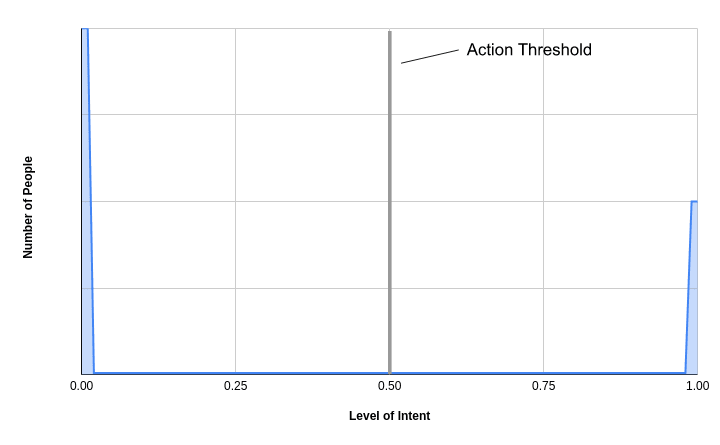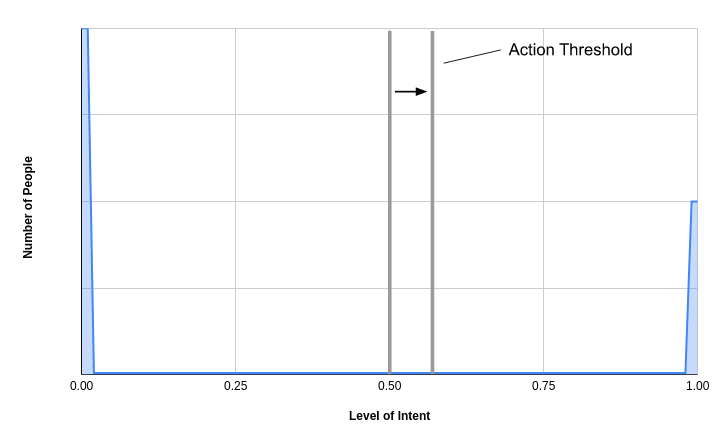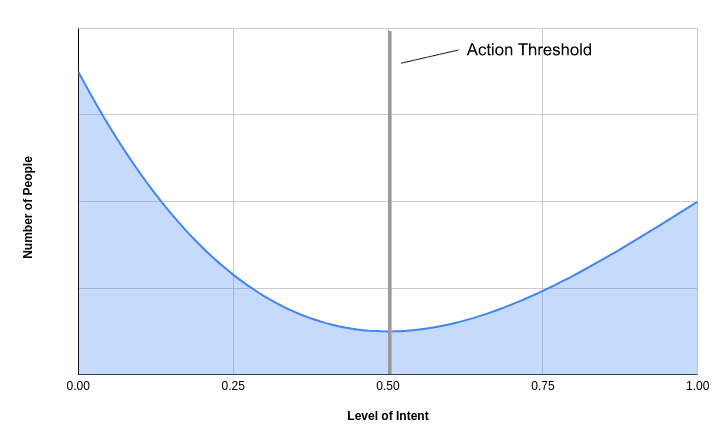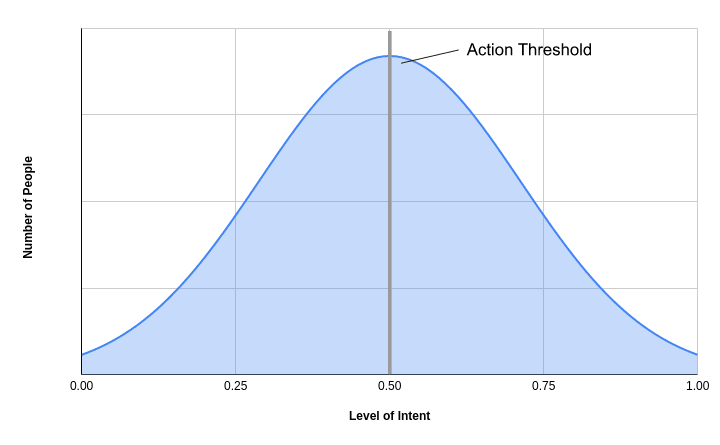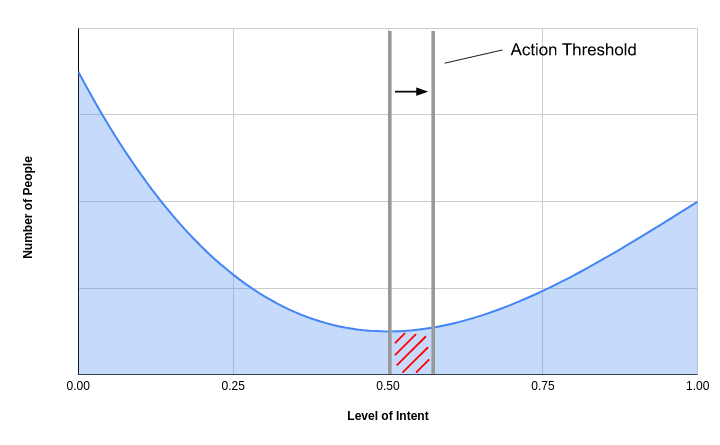The Assumed Intent Bias
6qbolec
4silentbob
1silentbob
4romeostevensit
3NickH
3CrimsonChin
1NickH
1CrimsonChin
1silentbob
6CrimsonChin
2dirk
1silentbob
2denyeverywhere
New Comment
How to combine this with the fact that "the nudge" apparently doesn't work https://phys.org/news/2022-08-nudge-theory-doesnt-evidence-future.html ?
Interesting, hadn't heard of this! Haven't fully grasped the "No evidence for nudging after adjusting for publication bias" study yet, but at first glance it looks to me as if it is rather evidence for small effect sizes than for no effect at all? Generally, when people say "nudging doesn't work", this can mean a lot of things, from "there's no effect at all" to "there often is an effect, but it's not very large, and it's not worth it to focus on this in policy debates", to "it has a significant effect, but it will never solve a problem fully because it only affects the behavior of a minority of subjects".
There's also this article making some similar points, overall defending the effectiveness of nudging while also pushing for more nuance in the debate. They cite one very large study in particular that showed significant effects while avoiding publication bias (emphasis mine):
The study was unique because these organizations had provided access to the full universe of their trials—not just ones selected for publication. Across 165 trials testing 349 interventions, reaching more than 24 million people, the analysis shows a clear, positive effect from the interventions. On average, the projects produced an average improvement of 8.1 percent on a range of policy outcomes. The authors call this “sizable and highly statistically significant,” and point out that the studies had better statistical power than comparable academic studies. So real-world interventions do have an effect, independent of publication bias.
(...)
We can start to see the bigger problem here. We have a simplistic and binary “works” versus “does not work” debate. But this is based on lumping together a massive range of different things under the “nudge” label, and then attaching a single effect size to that label.
Personally I have a very strong prior that nudging must have an effect > 0 - it would just be extremely surprising to me if the effect of an intervention that clearly points in one direction would be exactly 0. This may however still be compatible with the effects in many cases being too small to be worth to put the spotlight on, and I suspect it just strongly depends on the individual case and intervention.
Just to note I wrote a separate post focusing on pretty much that last point:
Personally I have a very strong prior that nudging must have an effect > 0 - it would just be extremely surprising to me if the effect of an intervention that clearly points in one direction would be exactly 0. This may however still be compatible with the effects in many cases being too small to be worth to put the spotlight on, and I suspect it just strongly depends on the individual case and intervention.
Two more biases it is related to are fundamental attribution error and is-ought fallacy. That is to say, intentions are often interpreted as outputs of essential qualities of the person rather than contingent on the situation, and intentions are often wrapped up with implicit oughts that multiple parties will interpret differently.
This is a great article that I would like to see go further with respect to both people and AGI.
With respect to people, it seems to me that, once we assume intent, we build on that error by then assuming the stability of that intent (because peoples intents tend to be fairly stable) which then causes us to feel shock when that intent suddenly changes. We might then see this as intentional deceit and wander ever further from the truth - that it was only an unconscious whim in the first place.
Regarding AGI, this is linked to unwarranted anthropomorpism, again leading to unwarranted assumptions of stability. In this case the problem appears to be that we really cannot think like a machine. For an AGI, at least based on current understandings, there are, objectively, more or less stable goals, but our judgement of that stability is not well founded. For current AI, it does not even make sense to talk about the strength of a "preference" or an "intent" except as an observed statistical phenomenon. From a software point of view, the future value of two possible actions are calculated and one number is bigger than the other. There is no difference, in the decision making process, between a difference of 1,000,000 and 0.000001, in either case the action with the larger value will be pursued. Unlike a human, an AI will never perfrom an action halfheartedly.
With this in mind. It seems odd that a lot of agile developers build software around "user stories". Seems to lead us right into the trap of imagining a users intentions.
Luckily I think the industry is moving away from user stories.
I don't think this is relevant. It only seems odd if you believe that the job of developers is to please everyone rather than to make money. User Stories are reasonable for the goal of creating software that will make a large proportion of the target market want to buy that software. Numerous studies and real world evidence, show that the top few percent of products capture the vast majority of the market and therefore software companies would be unhappy if their developers did not show a clear bias. There would only be a downside if the market showed the U-shaped distribution and the developers were also split on this distribution potentially leading to an incoherent product, but this is normally prevented by having a design authority.
I think when you say, "I don't think this is relevant" you mean... I agree with your premise (that user stories are related to the assumed intent bias) but I don't think that we should upend user stories yet because they do what they are supposed to.
To which I agree.
Development is complex and realistically even with user stories, developers are considering other users (not in the narrative). If you were to take away user stories and focus on tasks, developers would still imagine user intent. By using user stories we are just shifting focus on intent. Which I think is usually a net positive. This post helped me illuminate in my head where it might not be a net positive.
Unless I misunderstand your comment, isn't it rather the opposite of odd that user stories are so popular, given that this is what the bias would predict? That being said, maybe I've argued a bit too strongly in one direction with this post - I wouldn't even say that user stories are detrimental or useless. Depending on your product, it may well be that some significant ratio of users to have strong intent. My main claim is that in most situations, the number of people who are closer to the middle of the spectrum is >0. But it's not necessary for that group to dominate the distribution.
So in my view, it can still make sense to focus on a subgroup of your users who know what they're doing, as long as you remain aware that this will not apply to all users. E.g. when A/B testing, you should expect by default that making any feature even mildly less convenient to use will have negative effects. So you should not be surprised to see that result - but it may still be the right choice to make such a change nonetheless, depending on what benefits you hope to get from it.
I may have not been clear. I am agreeing with the entire post. I agree with your comment too that "user stories" arose most likely for the same reason as this bias.
I also agree with you that figuring out intention is an important part of development. A majority of users will use my software with the same intent.
I just meant to say that I immediately thought of "user stories" while reading this post. My initial thought was that user stories focus too much on intent. For example, if you are hyper focused on the user trying to reset their password you may neglect the user who accidentally clicked the reset password button and just want to navigate back to the log-in page. Would there be benefit to removing the user story as a goal and just make the goal, create a reset password page? I agree with you though, user stories serve their purpose and might be more of a net-good. This post just helped me recognize a potential pitfall of them.
But what does a user look like who uses the feature when it requires a single click, but doesn’t use the feature if it requires a double click? Clearly the data shows that these people exist, but I couldn’t easily point to a single person for whom that intervention is decisive in determining their behavior.
I use Discord, which recently switched the file-upload feature from requiring one click to requiring two (the first of which, if you single-click as you used to rather than double-clicking to skip, opens a context menu that I never use and did not want). I do still share images most of the time, but every single time I upload an image it's noticeably higher-friction and more frustrating than it previously was, and if I valued the feature less I can easily imagine ceasing to use it.
Prior to the update, the path from wanting to share a file to actually doing so was sufficiently short to feel effortless. The extra click, even though it's minor, adds a stumbling block in the middle of what was previously an effectively-atomic action (and moreover, adds latency; there's not very much more, if I remember to make my click a double, but there's still some, and as a user I consider latency one of the worst crimes a developer can commit).
Thanks for the example! It reminds me of how I once was a very active Duolingo user, but then they published some update that changed the color scheme. Suddenly the duolingo interface was brighter and lower contrast, which just gave me a headache. At that point I basically instantly stopped using the app, as I found no setting to change it back to higher contrast. It's not quite the same of course, but probably also something that would be surprising to some product designers -- "if people want to learn a language, surely something so banal as a brightening up the font color a bit would not make them stop using our app".
In your first example, it's clear that expected loss is as important as intent. It's not just that you probably don't have a strong intent to misuse their data. It's that the cost of you actually having this intent is pretty small when you only have access to whatever data is left on your laptop, compared to when you had access to a live production database or whatever. In other words, it's not that they necessarily have some sort of binary model of intent to screw them. Even if they have some sort of distribution of the likelihood that either now or soon you will want to misuse the data, it doesn't matter because the expected loss is so small in any model.
To impute a binary model of intent to screw them, they'd have to do something like this: Previously we had lots of people who just had root access to our production environment. We now want to tighten up and give everyone permission sets tailored to their actual job requirements. However, silentbob has been with us for a while and would have screwed us by now if that was their intent, so let's just let them keep their old root account since that's slightly less work and might slightly improve productivity.
In your second example, I'm involuntarily screaming NO NO NO DO NOT MAKE THAT CHANGE WHAT THE FUCK IS WRONG WITH YOU before I even get to their reasoning. By the time I've read their reasoning I already want them fired. When you report the results of the A/B test data, I'm thinking: well of course the data showed that. How could you possibly think anything else could happen?
I'm starting to think I've been programming for too long. Like, I didn't even have to think to know what would actually happen. I just felt it immediately.
In your third example, I don't think that's how gun enthusiasts usually reason about this point, but I respect that this isn't really what you're getting at.
